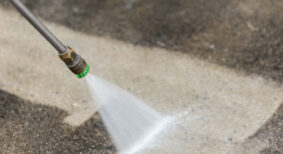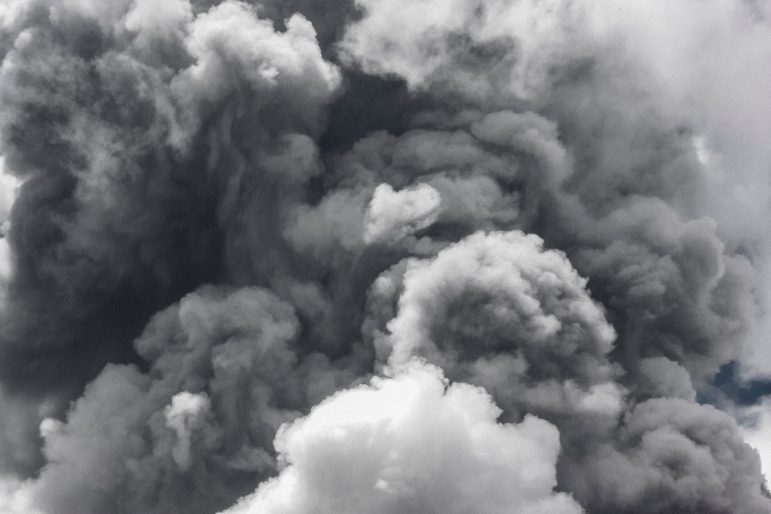Structural fires can not only cause devastating damage but also have long-lasting effects on a building’s health. One such long-term effect of fires is fire-damaged wood.
Restoration workers need to have a clear understanding of how fire and smoke can affect wood, as well as knowledge of the nature of combustion byproducts and the characteristics of the wood itself. This knowledge gives restorers the necessary tools to successfully clean and restore most smoke- or fire-damaged lumber.
While it is impossible to remove every smoke particle or combustion byproduct that may have contaminated the material or work area, smoke and fire-damaged wood can be cleaned to a point where any smoke odour is undetectable and will not reemerge in the future.
- Remove all charred lumber and fire debris from the work area. This is commonly known as “source removal.” Removing as much of the odour-causing materials from the workspace as possible will greatly reduce odour concentration and cross-contamination.
- Set up environmental controls, containments and air filtration. Air scrubbers with activated carbon filters, Ultra Low Particulate Air (ULPA) filters, or HEPA filters remove airborne particles and clean the air within the workspace. Keep in mind that air filtration alone won’t remove all odorous gases.
- Select the proper media or method to clean the wood surfaces. The outer layer of smoke-damaged wood typically holds the most particulate, odour, and staining. Removing this layer is often a necessary step in the decontamination process. Media blasting options may include dry ice, sodium bicarbonate, walnut shells, etc. Avoid using sand, which can cause widespread silica contamination, or soda, which can create a considerable mess and/or a white cloud. Media blasting creates considerable amounts of particulate matter and carcinogenic wood dust, and must be used very carefully as it can also damage exterior felt paper, glass, electrical wiring, pipes, and other materials.
- Dislodge particulate and debris from surfaces. If media blasting is used, a leaf blower, compressed air, or manual detail brushing can be used to dislodge loose, embedded, or surface debris from confined pockets and surfaces. Since this will cause more particulate to become airborne, air scrubbers should be working in tandem.
- Thoroughly vacuum all surfaces. HEPA vacuuming all surfaces will remove any remaining dust, debris, and particulate generated from the media blasting. Manufacturers of sealers and encapsulants require that surfaces be properly prepared and cleaned of dust and debris prior to application.
- Introduce heat, humidity and hydroxyls. Under certain conditions, the use of heaters with humidifiers can cause the pores within the lumber to release trapped VOCs. Hydroxyl generators work in conjunction with heat and humidity to create a powerful oxidizing reaction that neutralizes a wide spectrum of smoke odour gases. This three-pronged process may take a few days, and hydroxyl generators may generate ozone, which is known to create toxic byproducts so proper ventilation is important.
- Fog or apply an odour counteractant over all exposed surfaces. This can be in the form of a direct wet spray application or a thermal fog and can serve as an added insurance policy that re-odourizes wood with a strong new fragrance. Odour counteractants provide a layer of camouflage if smoke odour finds its way out of the lumber. However, one problem with using heavily fragranced deodorizers is that some customers may find them to be as offensive as smoke odour itself.
- Seal and encapsulate the affected lumber. Sealers and encapsulants are used to “lock in” or seal any residual odours from escaping into the indoor air. Be mindful of where the encapsulant will be used, whether it may be visible in places such as an unfinished basement, attic or crawlspace, or if it will be concealed within a wall or ceiling cavity. White sealers and encapsulants used in unfinished spaces can indicate that fire damage has been covered up and may raise questions.
- Have an IEP perform a post-remediation verification. Before taking down the containments, get written verification that remediation work was successful – often known as a “clearance test.” The purpose of a clearance test after deodorization is to determine the efficacy of cleaning fire-related combustion particles and residues from the structural components and provide a measure of assurance within the limitations of sampling, visual/olfactory observations, and scientific analysis that the structure has been remediated as well as possible.








